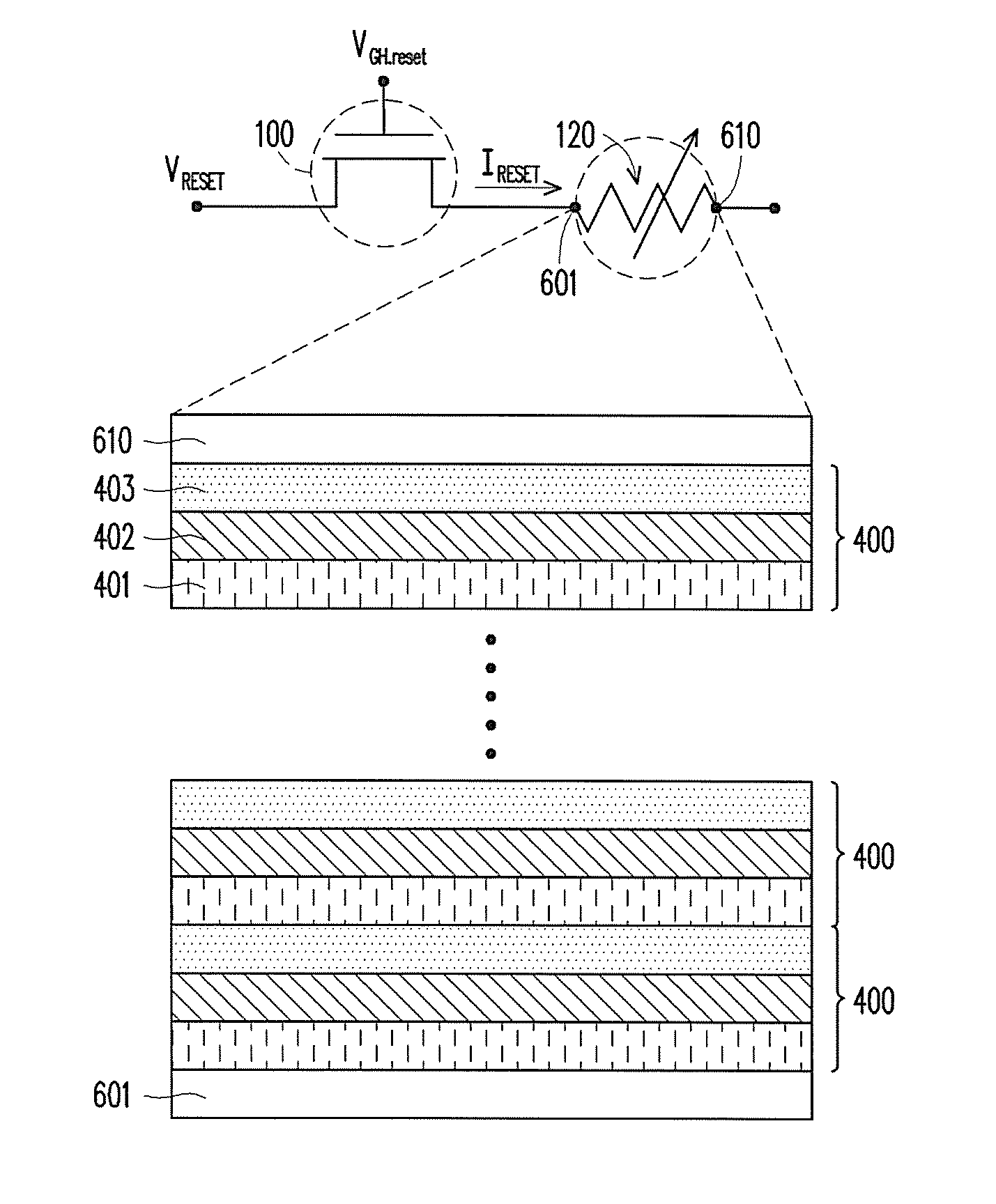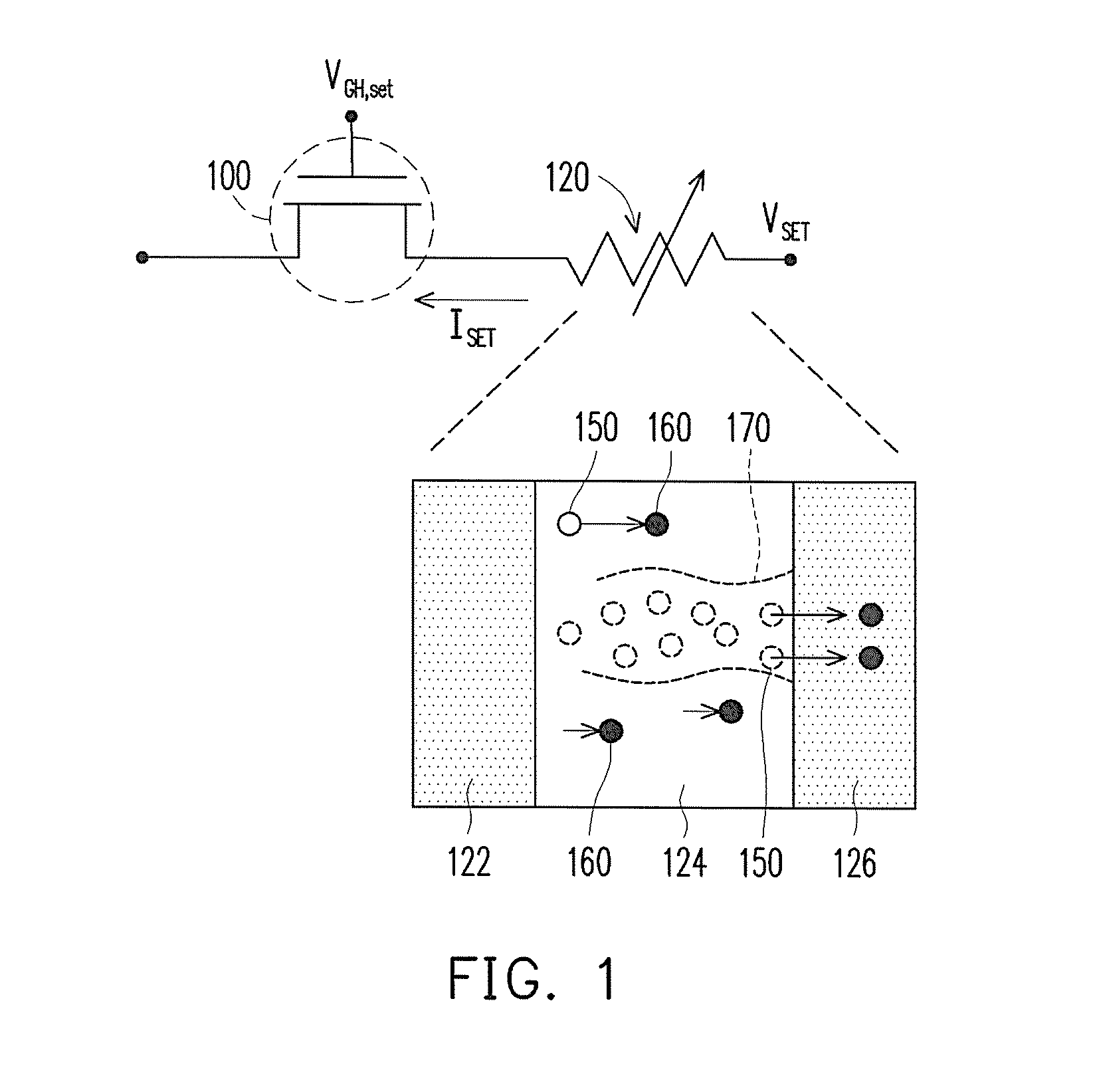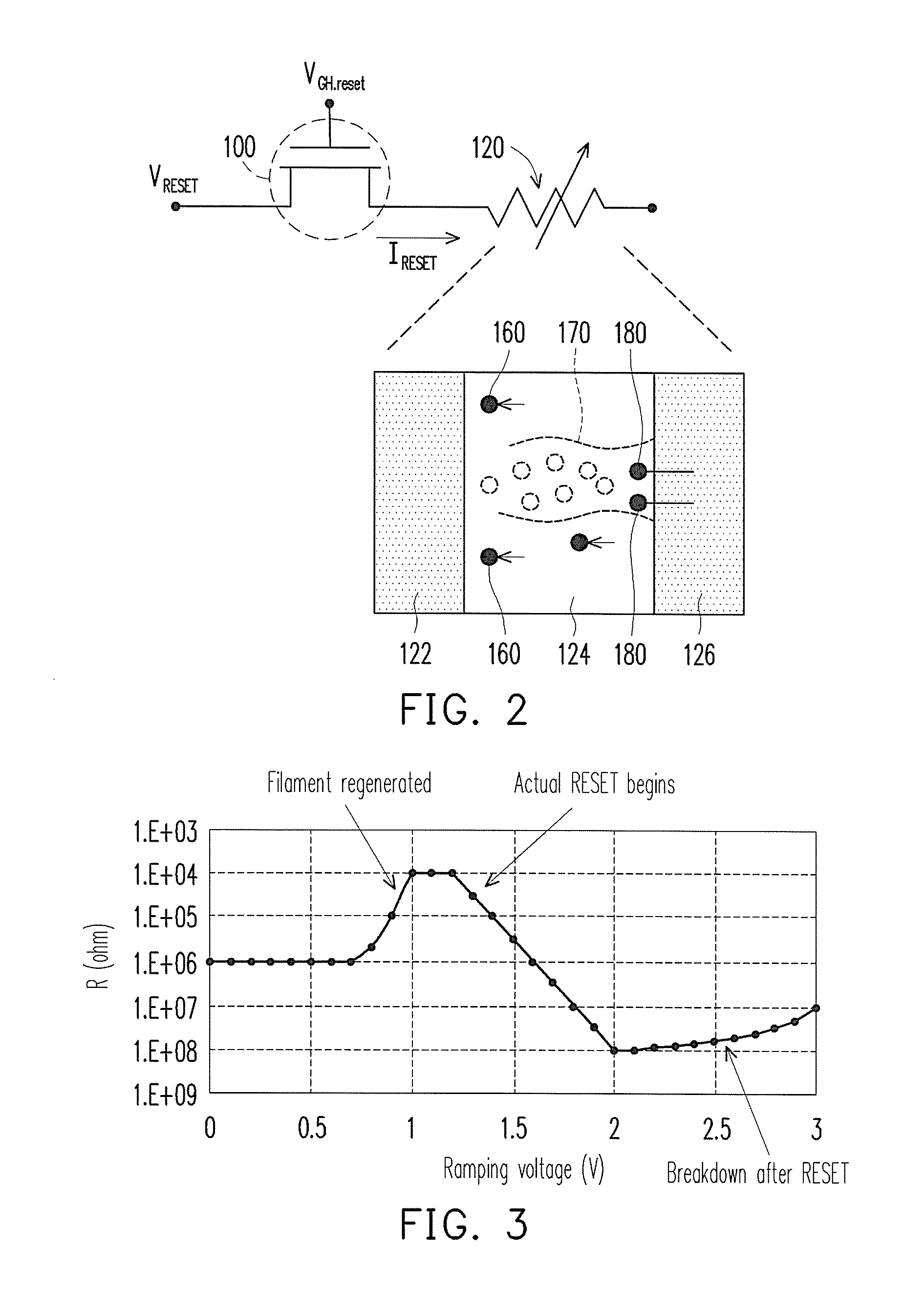Resistive random access memory cell and resistive random access memory module
a random access memory and resistive technology, applied in the field of resistive random access memory cells and resistive random access memory modules, can solve the problems of not being able to reduce the operation current of rram below 100 a when reset operation is performed, the operation of rram by brute force ultra-low current may not be satisfactory, and the filament may not be well-defined
- Summary
- Abstract
- Description
- Claims
- Application Information
AI Technical Summary
Benefits of technology
Problems solved by technology
Method used
Image
Examples
Embodiment Construction
[0024]In order to prevent the inadvertent SET operation described in connection with FIG. 3, this disclosure provides a novel structure of the RRAM cell having high resistance. Instead of increasing LRS value and lowering RESET current by reducing the SET current to form a broken filament, this disclosure stacks a plurality of repeated sets of layers to obtain the target resistance.
[0025]FIG. 4 schematically illustrates a key feature of the RRAM of an embodiment in the disclosure. The RRAM of this embodiment includes a plurality of repeated sets of layers 400. Each of the sets of layers 400 includes a resistance-changing layer 401 (e.g., HfOx), a barrier layer 403 (e.g., TiN), and an ionic exchange layer 402 (e.g., TiOx) between the resistance-changing layer 401 and the barrier layer 403, wherein a thickness of each of the resistance-changing layer 401, the barrier layer 403, and the ionic exchange layer 402 exceeds the Fermi wavelength (i.e. the deBroglie wavelength corresponding t...
PUM
 Login to View More
Login to View More Abstract
Description
Claims
Application Information
 Login to View More
Login to View More - R&D
- Intellectual Property
- Life Sciences
- Materials
- Tech Scout
- Unparalleled Data Quality
- Higher Quality Content
- 60% Fewer Hallucinations
Browse by: Latest US Patents, China's latest patents, Technical Efficacy Thesaurus, Application Domain, Technology Topic, Popular Technical Reports.
© 2025 PatSnap. All rights reserved.Legal|Privacy policy|Modern Slavery Act Transparency Statement|Sitemap|About US| Contact US: help@patsnap.com



